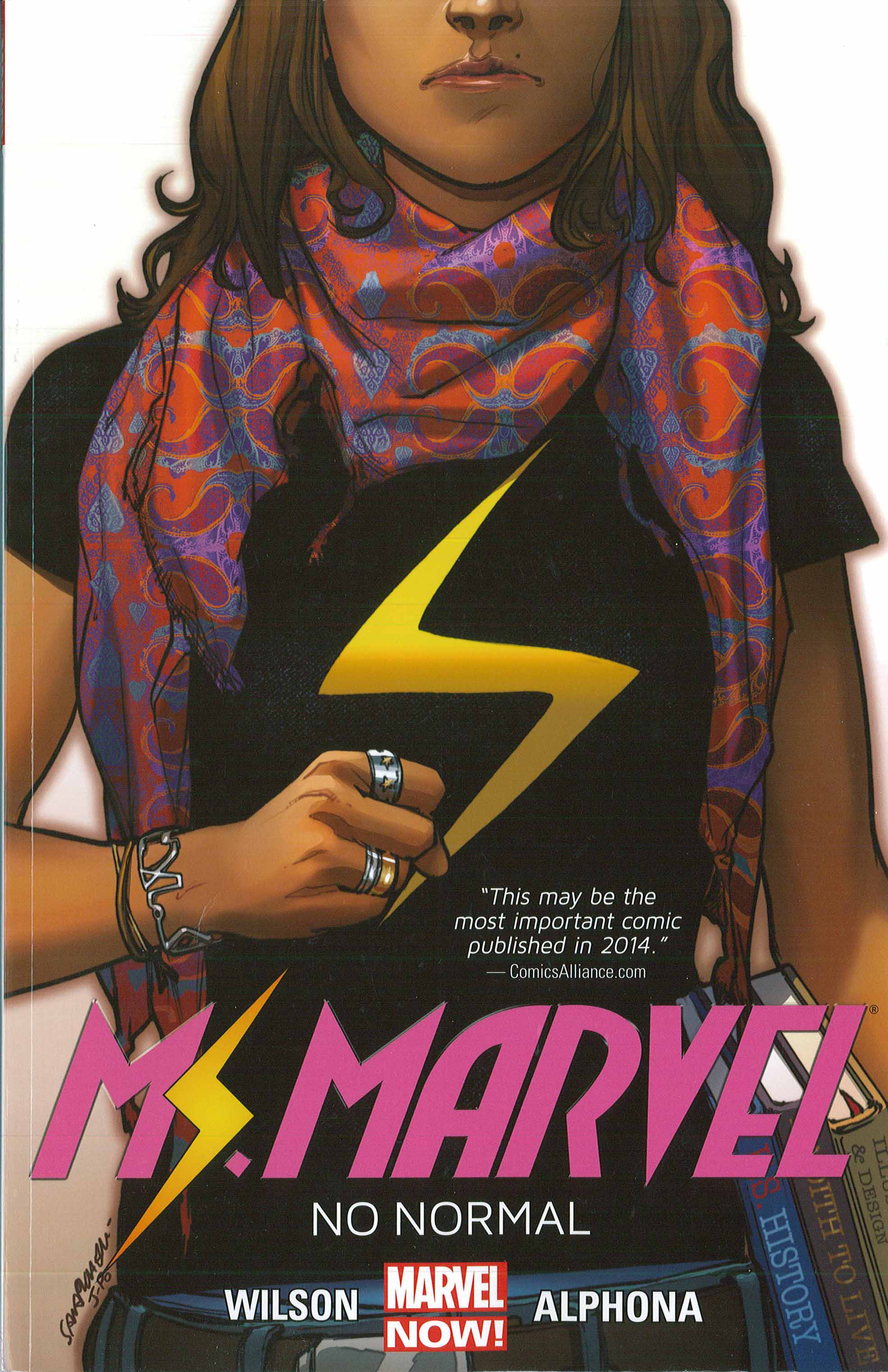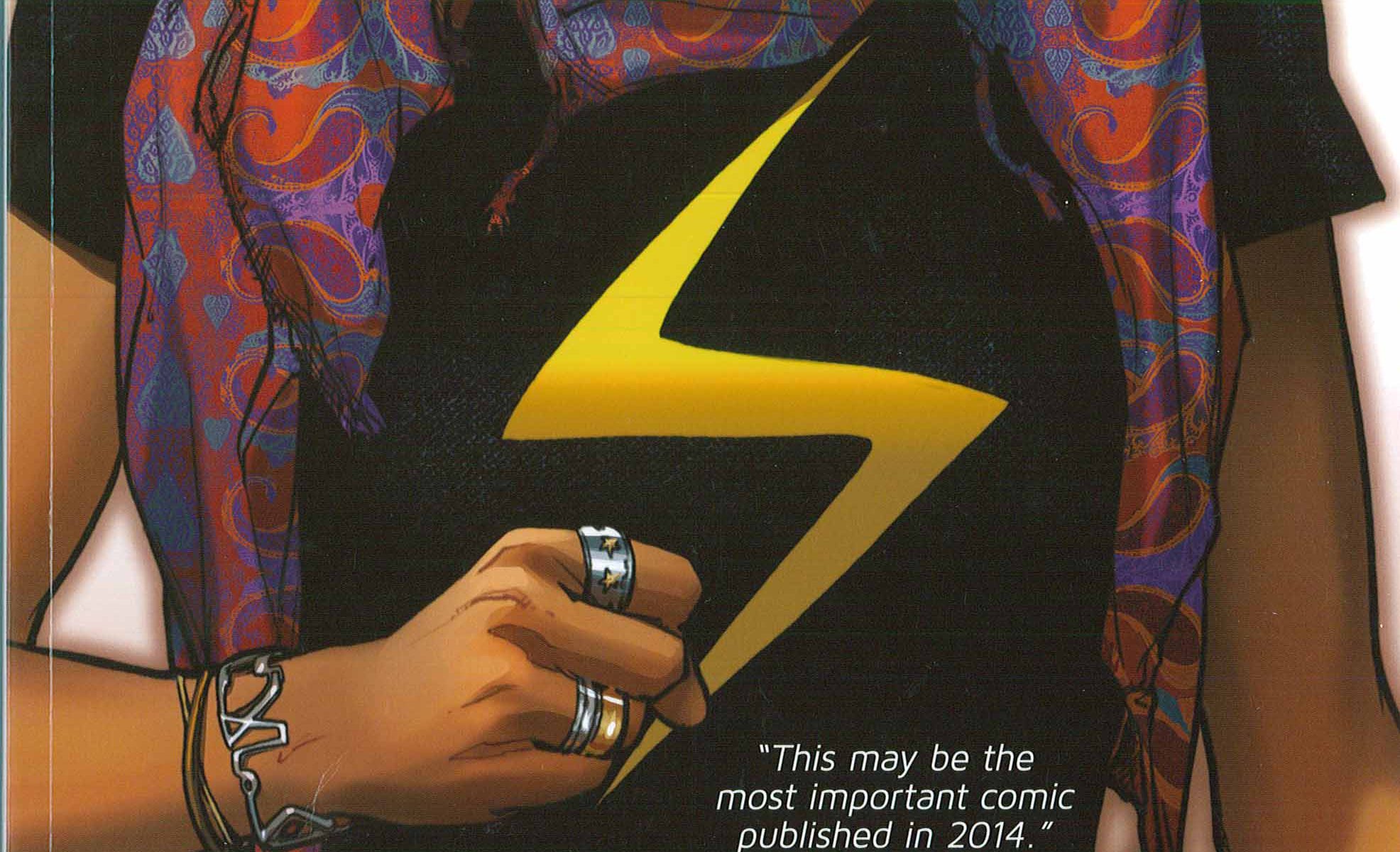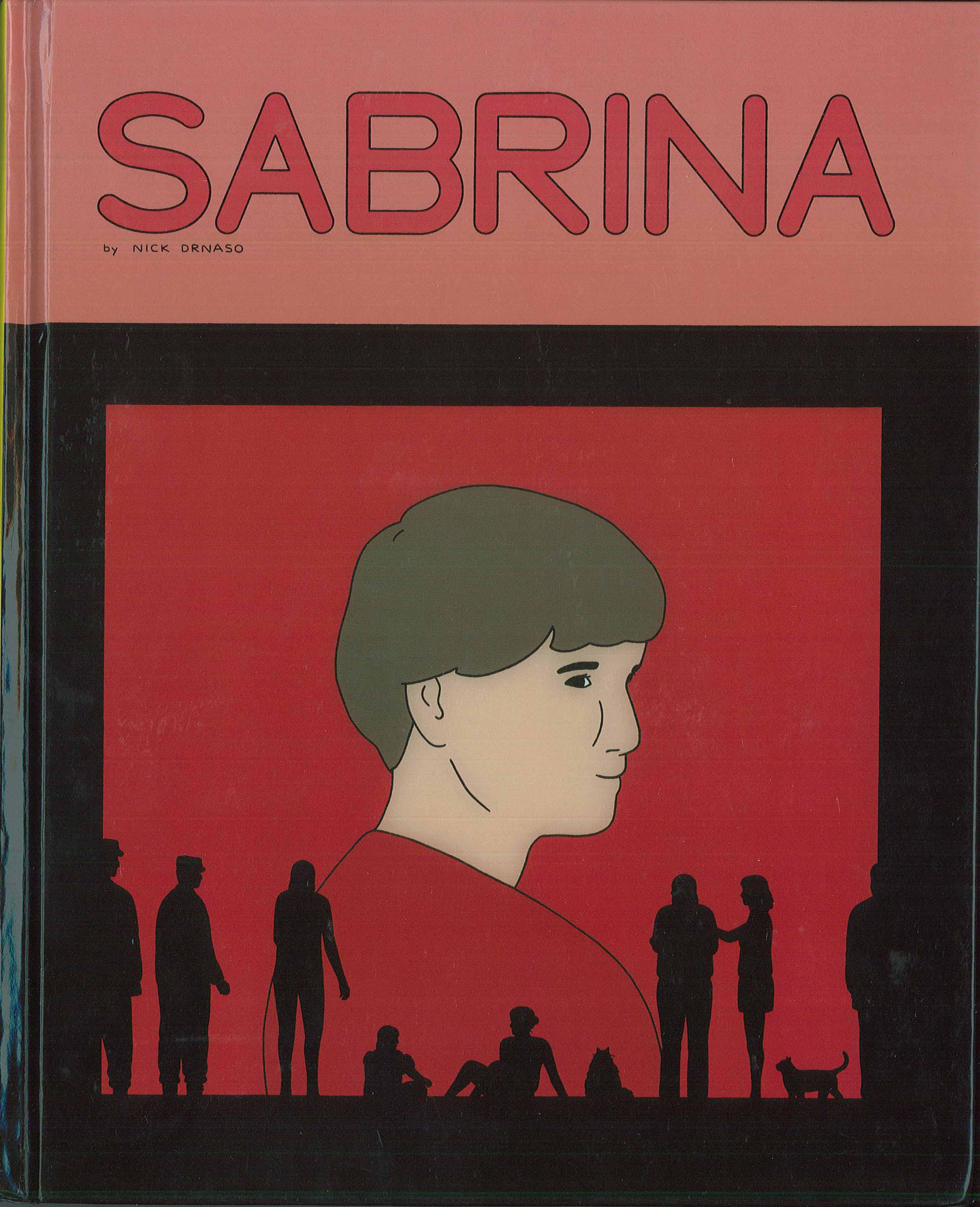This post was originally published by the Elkhart Truth in November of 2014. Ms. Marvel hit its 50th issue in June, and the collected trade of the series is now up to Volume 9, which just came out in July. If you haven’t read this series, it’s the perfect time to start: you’ve got a year or two to get caught up before the release of the Ms. Marvel film.
Thanks to Better World Books, 215 S. Main St. in Goshen, for providing me with books to review. You can find all of the books I review at the store, or order them for free if they’re out.

“Some people get to hide out in space stations. I get a Circle Q.” So speaks the edgy yet grounded Kamala Khan, a.k.a. the new Ms. Marvel. In “Ms. Marvel: No Normal,” the first collected trade volume of the most recent incarnation of Ms. Marvel, Khan is a second-generation Pakistani-American from Jersey City who has just inherited superpowers she doesn’t yet fully understand. She’s a Muslim teenager who writes superhero fan fiction, both loves and resents her parents, and like many North American teenagers no matter their faith or lack thereof, just wants to fit in. Continue reading “Jersey Justice: Review of “Ms. Marvel: No Normal””


